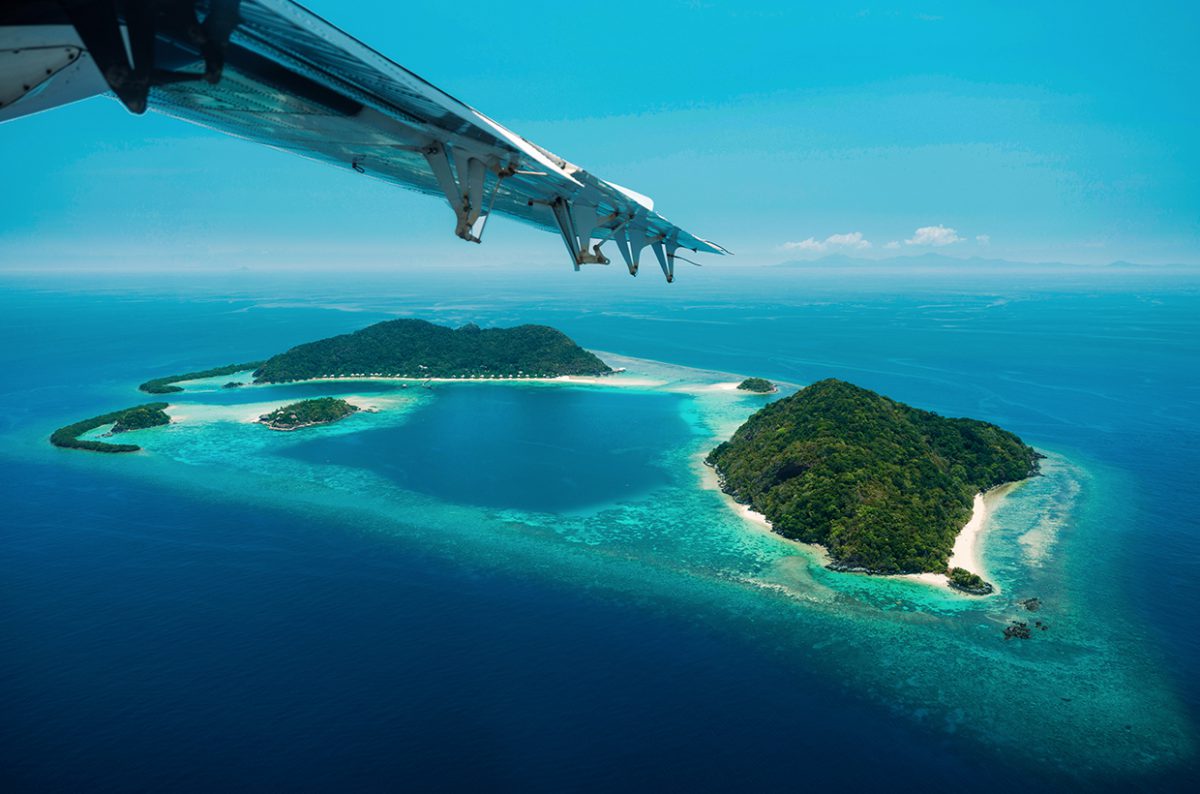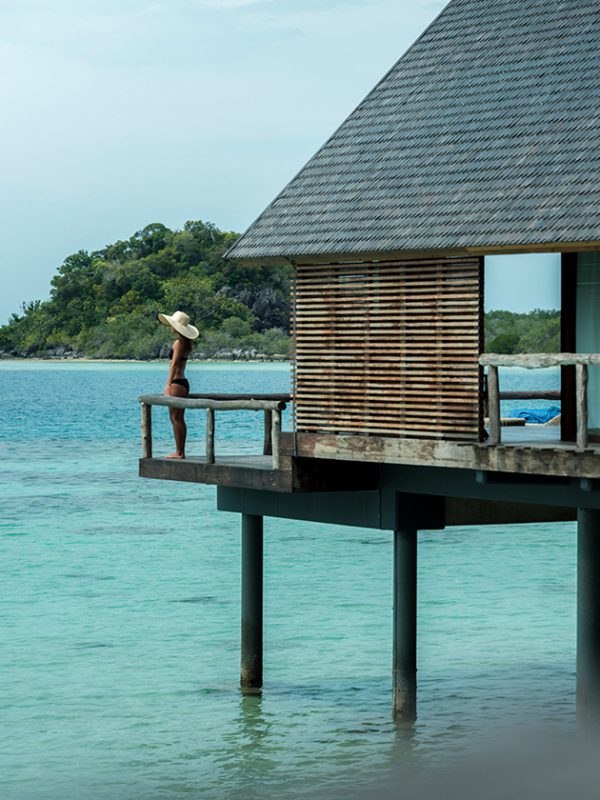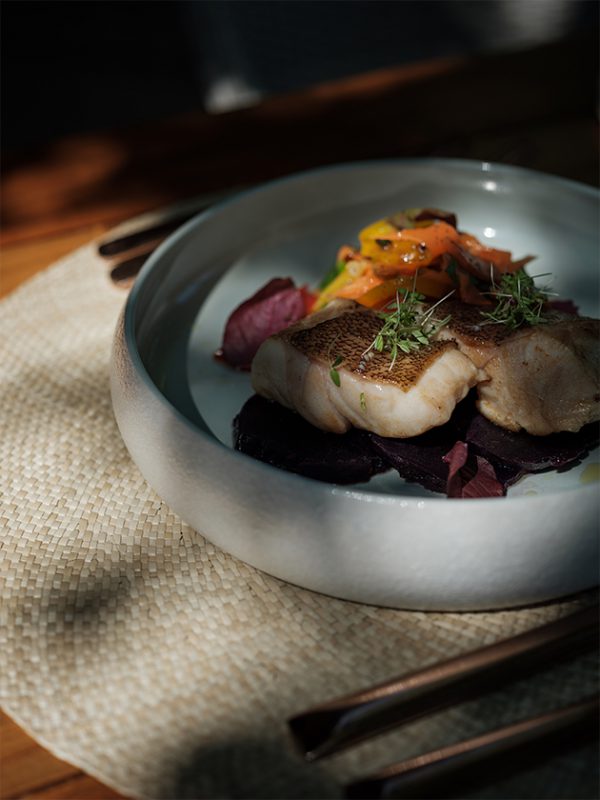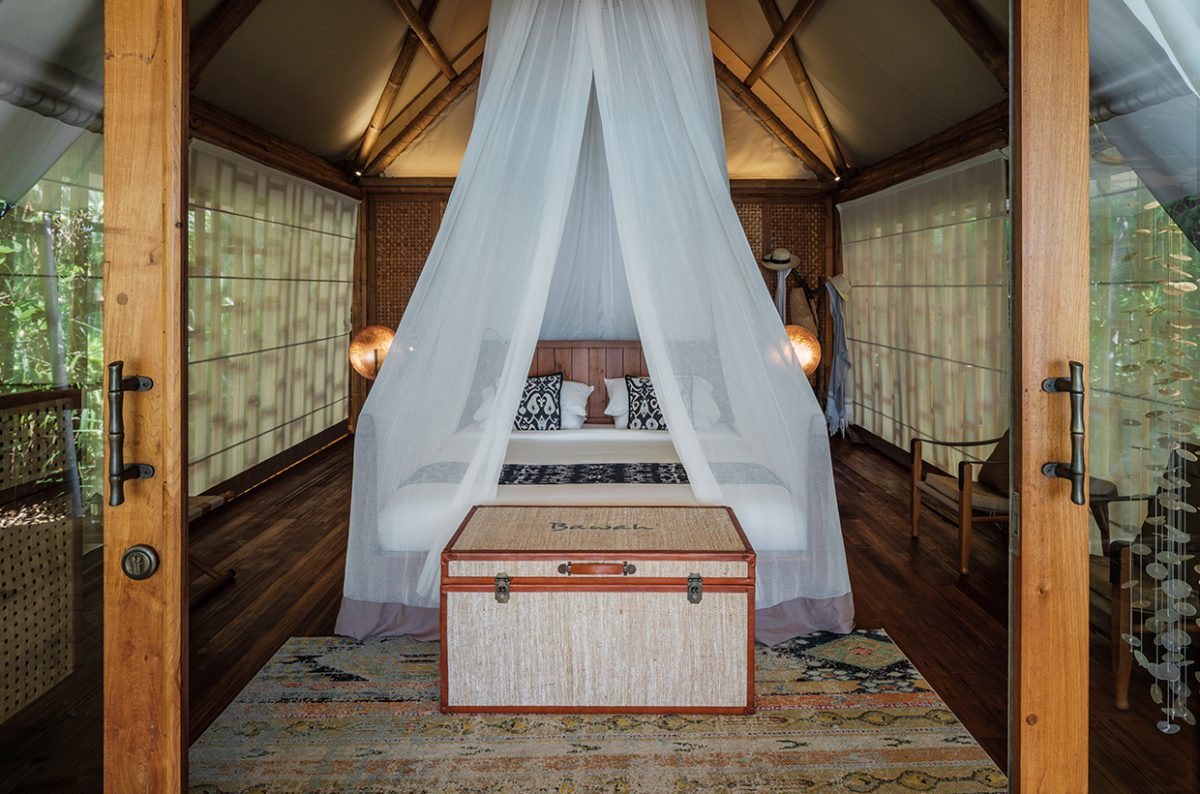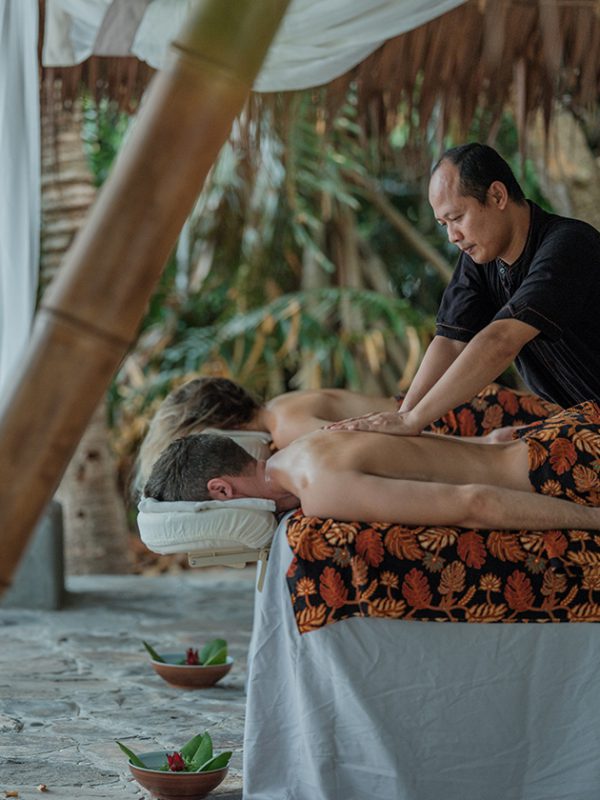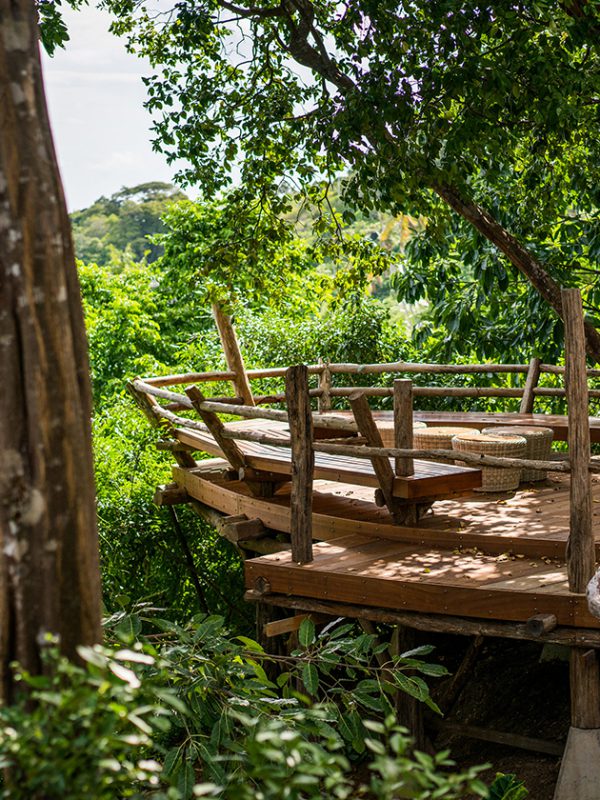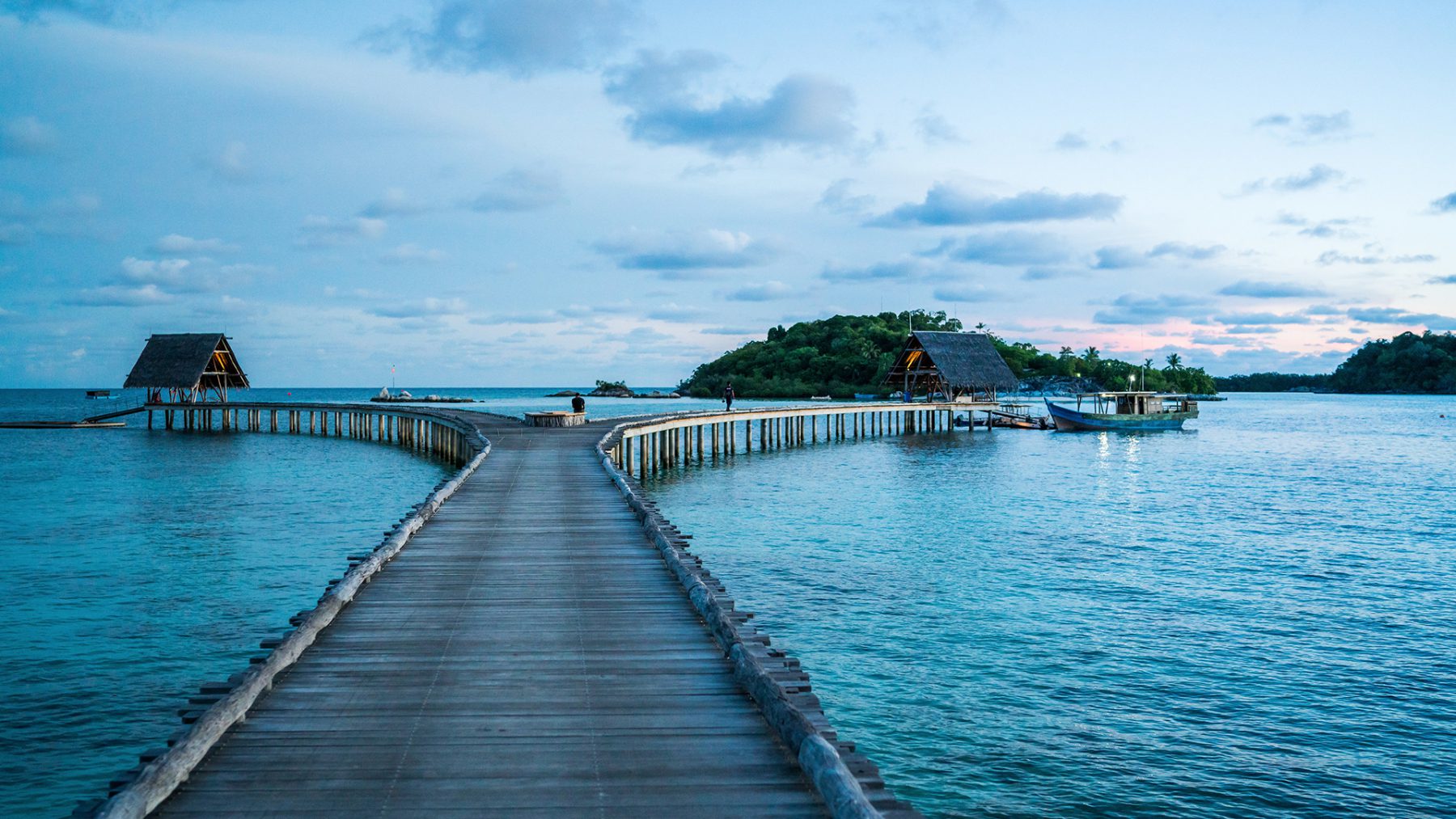Bawah Resort by Irina von Gagern | 4th September, 2020 | Travel
In times when it’s better to remain at home it helps to let the mind wander. At this eco-friendly island retreat in the South China Sea, social distancing takes on a whole new meaning. Only 70 exclusive guests are allowed to visit simultaneously.
When night falls the jungle awakens and I’m serenaded by a wilderness concert.
Bawah is a tiny group of islands in the South China Sea, a name that makes even seasoned luxury travelers go starry-eyed. In Indonesian, ”bawah“ means ”far below,“ a geographical reference to Bawah’s location at the southernmost point of the Anambas Archipelago of around 300 islands between Borneo and Malaysia.
From the air, Bawah Reserve is already bursting with promise. The pilot of our small seaplane circles the main island, which has five smaller ones surrounding it, and I admire the view – the beauty of the dense jungle, the white secluded beaches and the sparkling water all around. The aircraft touches down onto the smooth surface of the lagoon and heads toward one of the terminals on the split wooden jetty that looks for all the world like a mermaid’s tail from above.
Twelve years ago, while on a sailing trip, British businessman Tim Hartnoll discovered and instantly fell in love with the tiny, uninhabited island paradise beneath a centuries-old tropical forest. The 64-year-old shipping magnate who lived with his wife and three grown children in Singapore had made a lot of money in the shipping industry and was able to purchase the 300-hectare main island as well as the five small neighboring ones.
What makes Bawah so unique apart from its secluded location and untouched natural surroundings is the giant lagoon, thanks to which this magical place is accessible by seaplane even though it’s so remote. But it took six years to transform this enchanting island into a luxury eco-resort because Bawah is situated in a nature reserve, where the use of heavy machinery is forbidden. Hartnoll engaged Singapore architect and designer Sim Boon Yang, a specialist for ecological projects, to gently integrate 35 villas into the tropical landscape. I’m staying at one of the 19 beach suites, where prices start at € 1,855 per night, depending on the season. The overwater bungalows perched on stilts with their stunning views of the lagoon are even more exclusive: Prices start at €2,250 per night.
A sandy path, freshly raked, leads from the reception area into the jungle. Every few meters I see a lovingly painted wooden sign suspended from the branches. Each one bears the name of a current guest and points the way to their villa. I wonder for a moment whether this practice conforms with data protection regulations back in the EU, but am instantly charmed the moment I catch sight of the IRINA sign, which I follow to my own beach suite – an open, light-filled bamboo structure with a high, white tent roof and bamboo straw blinds serving as side walls. I walk up a couple of bamboo steps to reach the veranda, which is just meters from the sea. Behind me in the 70-square-meter space is the bedroom and behind it, a beautiful bath.
Wagon-wheel-sized stony corals in pastel colors and deep blue starfish – right on my doorstep.
The tub and sinks have been handcrafted from recycled Indonesian copper and feature clean, elegant lines. At Bawah, great care is taken to protect the environment, but in an unobtrusive way. Hot water comes courtesy of well concealed solar panels and both rain and seawater are treated to produce drinking water, which is filled into bottles.
I’ve traveled light. No more than 15 kilos are allowed on the last stage of the journey by seaplane, so I’ve only brought with me a few summer dresses and bikinis, a pair of sneakers, sandals and my yoga things. A morning yoga session on the beach is included in the price, as are daily spa treatments, a beach picnic on secluded Coconut Beach and all water sports and activities with the exception of diving.
There’s a straw hat for me to use hanging on the coat rack and I spot a specially developed coral-friendly sunscreen in the bathroom alongside other care products. In true earth friendly fashion, all of them are provided in reusable ceramic containers. Someone has dropped off some snorkeling equipment on the veranda for me, and I decide to try it out immediately. I am richly rewarded by the sight of wagon-wheel-sized stony corals in pastel colors and deep blue starfish right here in the lagoon on my doorstep.
A delicious meal made from local ingredients is served in the evening. I climb some stone steps that have been cut into the cliff near the mermaid jetty to reach the elegant Tree Tops restaurant which, incidentally, was also designed by Sim Boon Yang. The woven reed roof, which looks like an upside down birds’ nest, is supported by an airy bamboo structure that is open on three sides. At dusk, the view of the lagoon is absolutely stunning. There are about two dozen other guests of all different ages at Bawah. Traveling by themselves or as couples, they come from all over the world, including Germany, England, Italy, Asia and the U.S. Here on the island, the dress code is relaxed. When night falls, the jungle awakens and from the wilderness beyond my suite, I’m serenaded later in the evening with a breathtaking concert.
Luckily, I neither see, hear nor feel any mosquitoes. Teguh Wahyu Pramana, Bawah’s chief gardener, shows me his ingenious system for controlling them that doesn’t use any chemicals at all. He fills several containers with water to encourage the mosquitoes to breed, but before the larvae have a chance to hatch, he flushes the water away. Captain Green, as Teguh is known on Bawah, is very proud of his huge garden, where he grows just about all the fruits and vegetables you can imagine, including eggplant, bananas, chili peppers and herbs. The list goes on. I can tell how fond Captain Green is of his garden, but he loves the island very much too and wholly supports Tim Hartnoll’s sustainable hotel concept. During my stay on Bawah, I’m struck time and again by how passionate the staff are about their place of work.
Sakti Nasukha is no exception. He and I have arranged to meet for a walk through the jungle. The 29-year-old was one of the first Bawah employees and tells me enthusiastically about the unique plants and animals that live here. He leads me along a steep and narrow path through the dense greenery until we reach the highest point of the island, where we stop for a breather near a magnificent Dipterocarpus grandiflorus – an endangered hardwood tree that stands over 40 meters tall. Sakti tells me proudly that the tree is probably around 270 years old.
A family of hill mynas living in the crown of the tree draws our attention with their loud, piercing cries. We encounter other tropical birds as well, including yellow bittern, mangrove blue flycatchers and gray-capped emerald doves. Sakti shows me some fish bones lying on the ground – clear evidence of an osprey’s meal.
Behind me, the jungle, before me, like a giant bathtub, the turquoise waters of the lagoon.
After walking for about half an hour we slip through a narrow opening in a magnificent blooming pink orchid bush to emerge on a stony plateau some 50 meters above the sea. Behind me lies the jungle and before me, like a giant bathtub, the sparkling, incredibly beautiful turquoise waters of the lagoon. Beyond that, there’s nothing at all. No airplane, no ship, just myriad shades of blue stretching as far as the horizon. I feel a small pang of regret at the thought of having to leave this wonderful place and return to civilization the next day.
